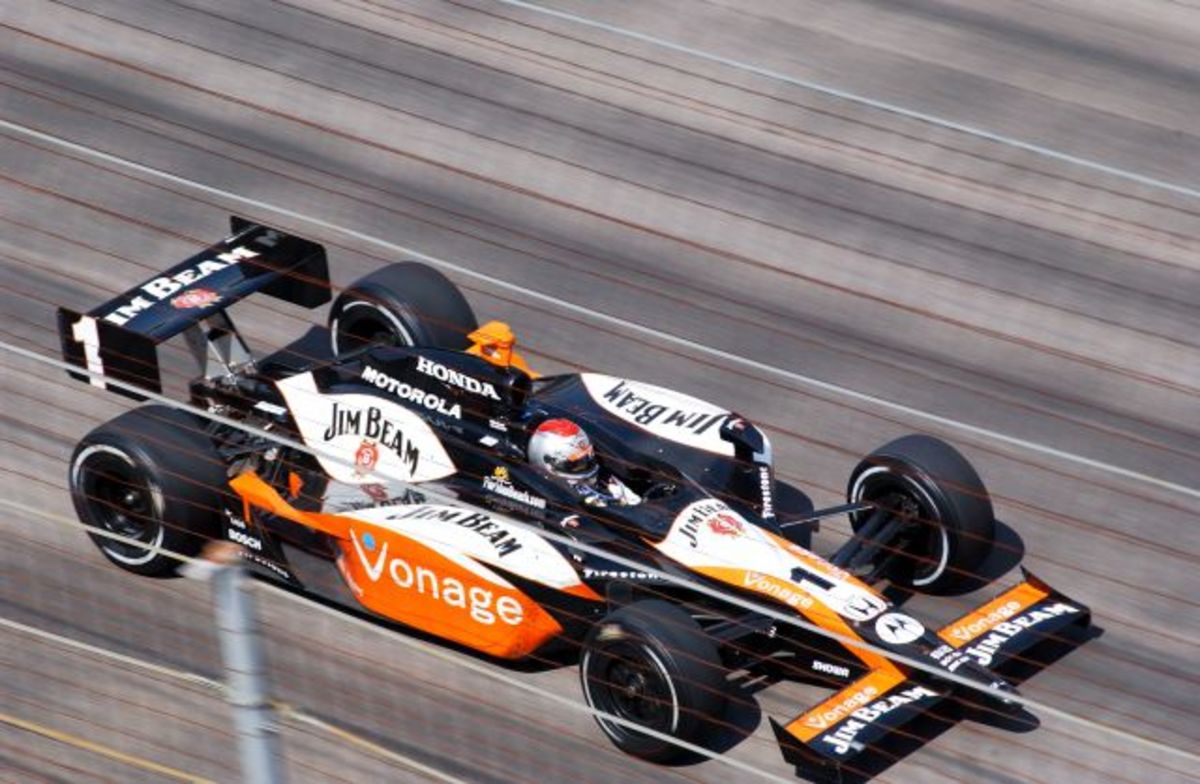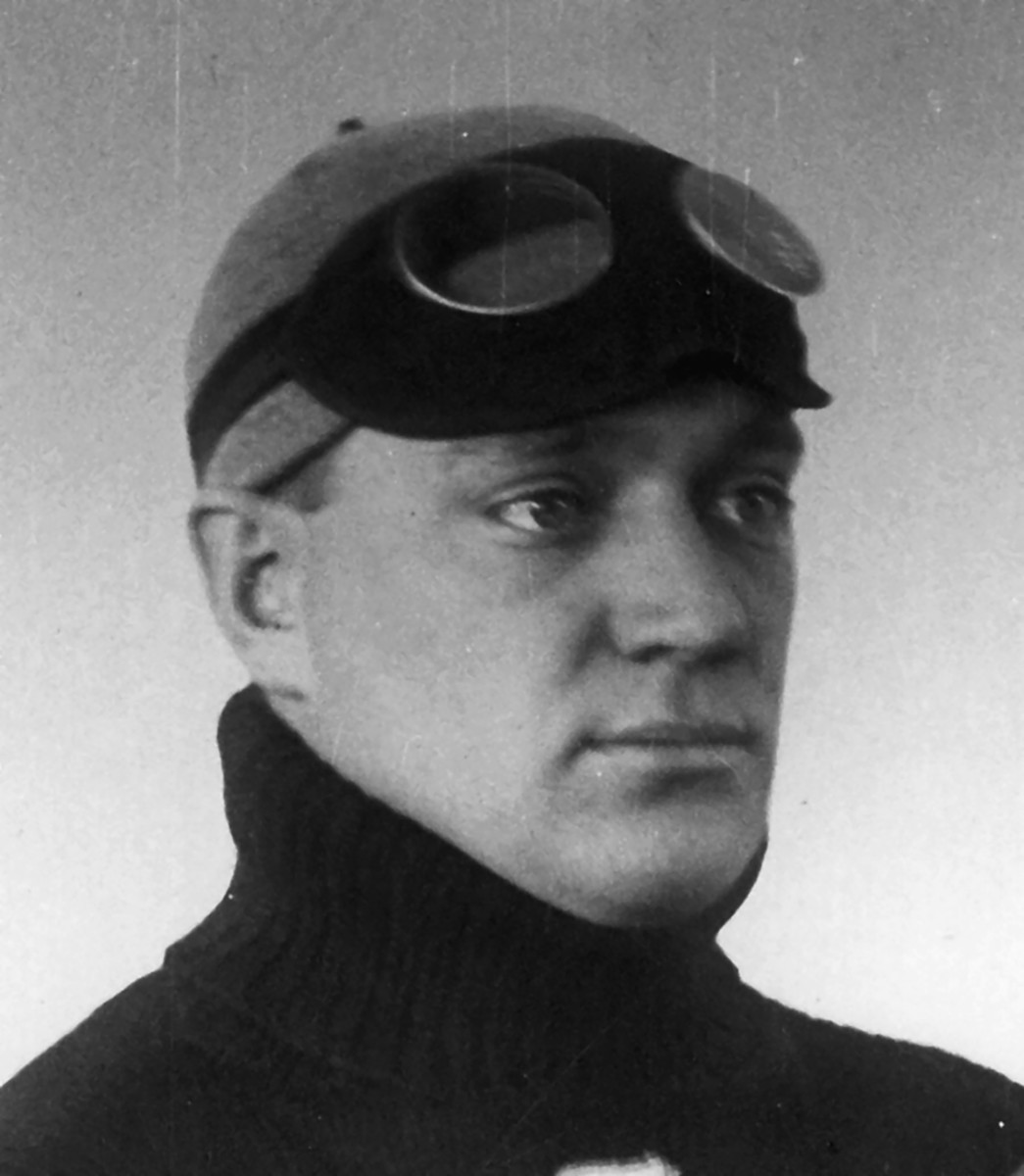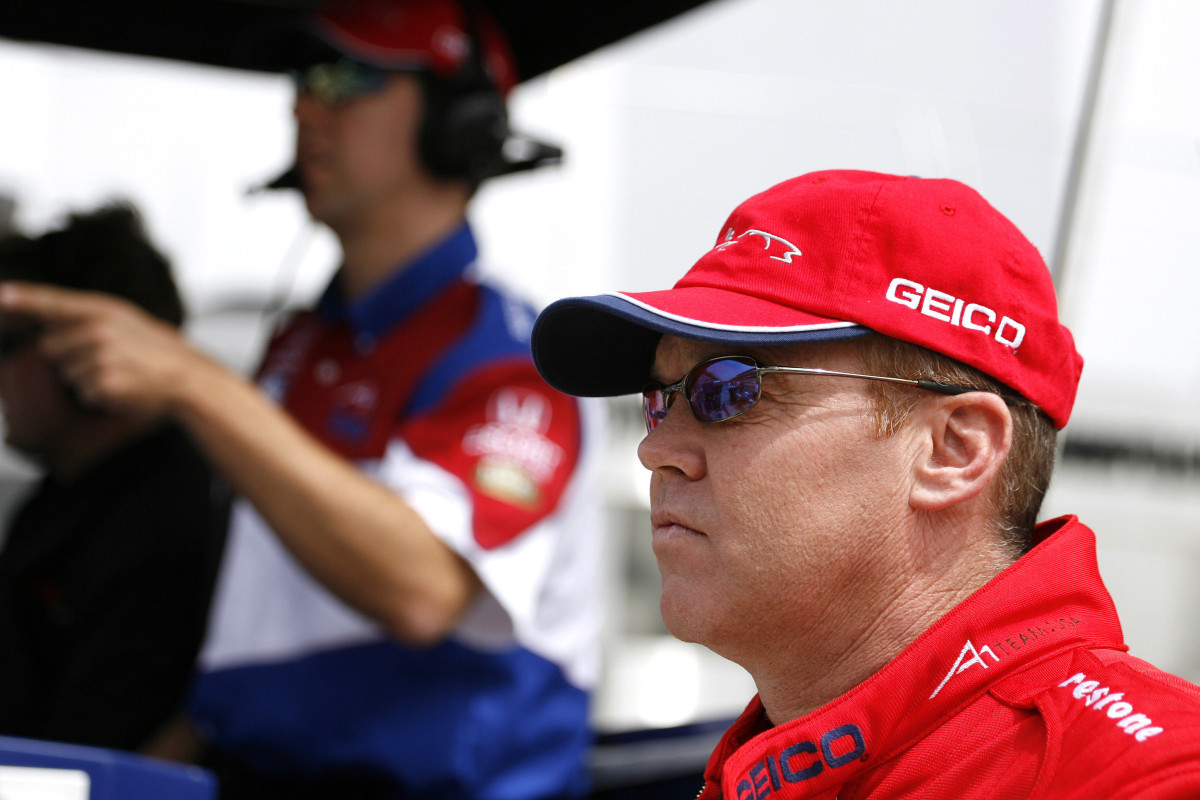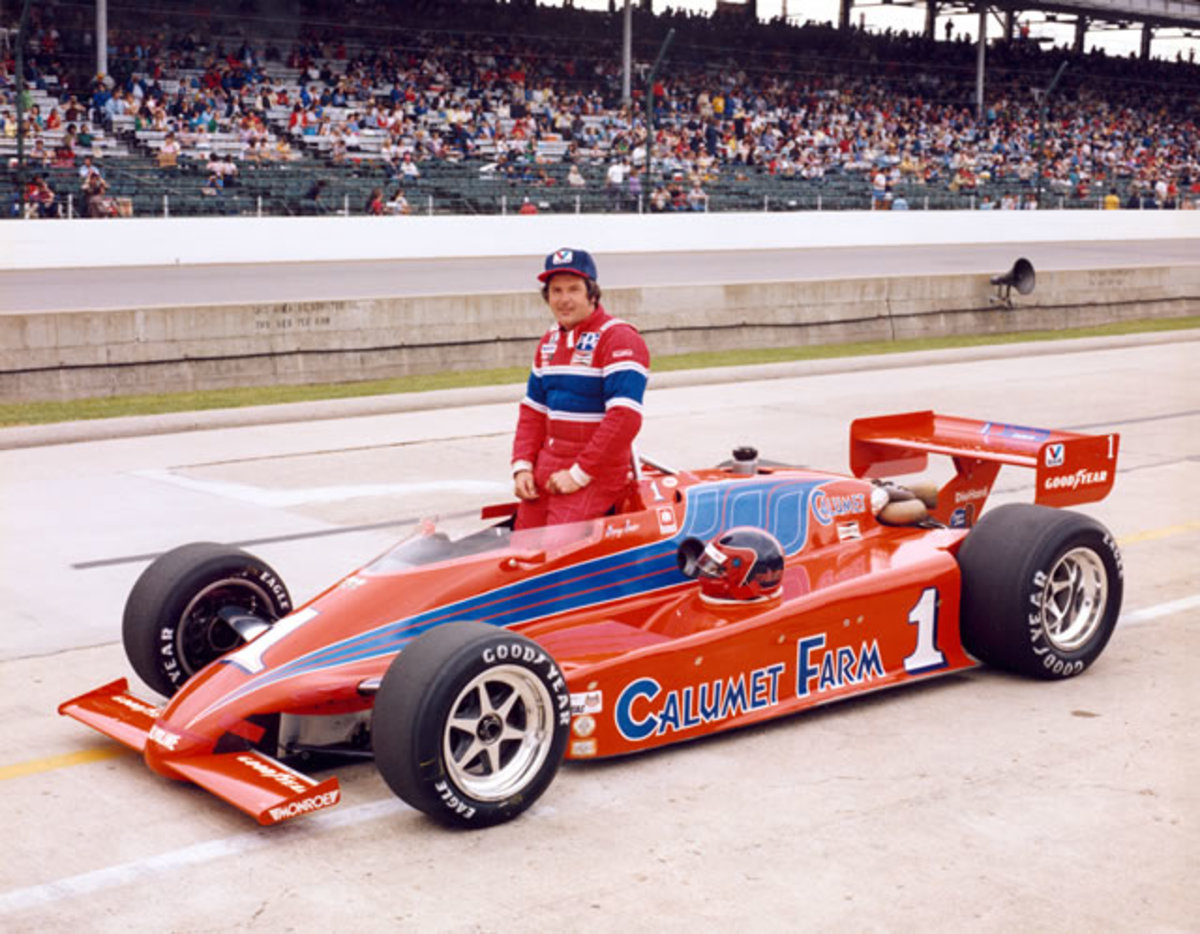Curses! Why wearing No. 1 at Indy doesn't always make or mean you're a winner

Tradition is a big part of the Indianapolis 500. And one of the most storied racing traditions involves the right to use the number 1 on a driver’s car as the defending series champion.
This tradition dictates that the defending IndyCar series champion team gets exclusive use of the No. 1 on their championship-winning car for the following season -- as it does in many other global racing series, like Formula 1, where champion Max Verstappen is carrying the No. 1 instead of his traditional #33 this season.
For a long time, it was one of the biggest honors bestowed to a champion.
The pole winner has been more successful at Indianapolis with the No. 1. Thirteen times the No. 1 has led the race at the starting drop of the green flag, but race-winning No. 1s haven’t been so lucky.
In fact, the last winner of the Indianapolis 500 that used No. 1 was in 1971, when the late Al Unser Sr. recorded the second in a pair of back-to-back wins at Indianapolis. 1971? That's 51 years ago!
The No. 1 has managed to finish 2nd only three times in 49 Indy 500 races since then (Tom Sneva in 1978, Rick Mears in 1982 and Will Power in 2015).
Even worse: 20 of the races since the last win didn’t even have a car with the No. 1 in the field. As retired Indianapolis Motor Speedway Museum and archivist Donald Davidson might say, "You could look it up!"
So what value does this honor have? Is it a self-fulfilling prophecy with so few chances for a No. 1 to appear that it’s guaranteed not to have results? Do the pressures of merchandise and sponsorship make it inconvenient to switch numbers?
So then, is the #1 cursed?
Scott Dixon is a good example of superstition. While having won the IndyCar Championship six times, he has not used No. 1 on his car for a title defense after a dreadful season defending his first Indycar championship in 2004.
Dixon’s 6 titles are also a big reason why since open-wheel reunification in 2008 brought the Indy Racing League and the Champ Car World Series (CCWS) back together, only 4 Indycar drivers have chosen to use No. 1 on their car in their title defense season: Ryan Hunter-Reay (2014), Will Power (2015), Simon Pagenaud (2017), Josef Newgarden (2018 and 2020), and 3 of them were from Team Penske, the longest-tenured team in the sport:
Either way, this combination of honor and ambiguity about using the number have led to some unique circumstances around the No. 1 at Indianapolis. In service of sharing some of these stories and giving fans a fun excuse for watching replays of some of the most iconic races in recent Indy history (it *is* May after all), here are a few of our favorites:
Picture 15/100 in celebration of 100th Indy 500, 1991 driving for Granatelli Racing Started 14th 🏁 3rd @IMS @IndyCar pic.twitter.com/r9AUvE739e
— Arie Luyendyk (@ArieLuyendyk) March 5, 2016
“A Tale of Two Champs” - 1991 Indianapolis 500 (watch it)
Once upon a time, through a deal brokered in the early 1980s, the Indianapolis 500 was sanctioned by the United States Auto Club, and added to the then CART schedule. This was the uncomfortable result of the first open-wheel “split” that pitted two rival series against each other in a bid to rule IndyCar racing (Sound familiar?)
What this essentially meant at the end of the 1980 season, that in addition to being part of the IndyCar schedule, the Indianapolis 500 was also part of a USAC-sanctioned championship called the “USAC Gold Crown Championship” which had the Indianapolis 500 on its schedule, along with other selected dirt and paved track races.
By 1990, however, the Gold Crown Championship consisted only of the Indianapolis 500. This meant that the Indy 500 winning team, in theory, had the right to use the No. 1 in the following year’s Indy 500, even if that was a different team than the IndyCar champion.
1990 Indianapolis 500 winner Arie Luyendyk used the No. 9 for the rest of the Indycar schedule (switching from the “Domino’s Pizza Hot One” No. 30 when sponsorship became a struggle), but chose to use #1 at Indianapolis, presumably for the honor attached with the prize.
This forced 1991 IndyCar champion Al Unser Jr., who used No. 1 on the rest of the schedule to use No. 2, and the then No. 2 Michael Andretti to switch to No. 10. The musical chairs didn’t result in victory for anyone though all three fared well. Andretti, in possibly his best chance to win the race, was 2nd, behind winner Rick Mears. Luyendyk was 3rd, and Al Unser Jr was 4th.

“The Andretti Curse” strikes again - 2006 Indianapolis 500 (watch it)
To help with (and compete against) son Marco Andretti in his first Indianapolis 500 start in the 2006 edition, Michael Andretti came out of retirement to run the race, making his first start in the so-called Greatest Spectacle In Racing since 2003.
Andretti ran the No. 1 on this car, the honor of which was earned by the Andretti Green Racing team that Michael was part owner of, having won the 2005 IndyCar Championship with Dan Wheldon (who switched to Target Chip Ganassi Racing in 2006, and as such left the No. 1 behind).
Michael ran well in the 2006 race, having led with as little as 3 laps to go. But his fuel save strategy fell short, and so did Marco, the Andretti curse striking again as winner Sam Hornish passed Marco for the win on the last lap within sight of the checkered flag.
An Andretti 1-2 became an Andretti 2-3 and Marco was left to wonder “what if”, as had his father and grandfather so many times before. Andretti’s 3rd is only one of 7 top-three finishes for the #1 since the last win in 1971.

“The First No. 1” - 1911 Indianapolis 500 (watch it!)
For the inaugural Indianapolis 500, the positions were decided by the date the car entry was received in the mail. This made Lewis Strang, the driver of the car of the first entry received, the first-ever “pole-sitter” at Indianapolis, and also the first driver to use the No. 1 in the race. Strang, already a celebrity on and off the track (his relationship with stage actress Louise Alexander made headlines during the first-ever race at Indianapolis in 1909)
By the time the first Indianapolis 500 came in 1911, Strang and Alexander were “through” and Strange, “still stinging from his divorce”, didn’t fare much better in the race, qualifying 29th out of 40 starters, and dropping out after 109 laps with a “frame” issue.
Sadly, he may have also been the first victim of the supposed No. 1 curse, as less than two months later, Strang was killed on his way to a car testing run in Blue River, Wisconsin, leaving a legacy as one of America’s best early race drivers that have largely been forgotten by time.

“Number #1 misses the show” - 1995 Indianapolis 500 - (watch Bump Day!)
Defending champion of both the IndyCar series and the Indianapolis 500, Al Unser Jr. and the Team Penske No. 1 failed to qualify for the race. It was the first time since 1968 that Team Penske had failed to get any cars in the race, and also marked the first time that a defending champion who had attempted to qualify for the race did not make the show.
Sadly, the No. 1 didn’t even make a qualifying attempt, as Unser Jr. tried to get three cars up to speed in what turned out to be a fruitless attempt to make the field.

“Dirt Trackin’ a Path” - 1983 Indianapolis 500 (watch it!)
In a similar quirk that allowed Arie Luyendyk to use the #1 at Indianapolis over the reigning Indycar champion in 1991, George Snider, got the honor of using the #1 for the 1983 Indianapolis 500.
This time the honor was a bit more on merit - Snider was an accomplished dirt track racer and in the 1981-82 USAC Gold Crown season (the competing series to Indycar), which consisted of 6 races, three each on dirt and three on paved surfaces including the 1981 AND 1982 Indianapolis 500s Snider won the title on the virtue of 4 top 10s in the 5 races and a win at the dirt track at Springfield, Illinois.
Since the 1983 Indianapolis 500 was still sanctioned by USAC, defending Indycar champion Rick Mears had to switch from #1 to #2 for the race. “Ziggy”, as he was known, only managed only a 32nd place finish in the #1 car, one of his 22 career starts in the Indy 500.
You know I love our sport’s history. This year it all comes together getting behind the wheel of the @abcsupplyracing Chevy honoring AJ’s first 500 win with @AJFoytRacing.
— JR Hildebrand (@JRHildebrand) April 8, 2021
Make no mistake, this field might be stacked but we’re here to run that #1 back up to the front! https://t.co/1JwkdG6fja
“A Tribute To A Legend” - 2021 Indianapolis 500 (watch it!)
Technically, Scott Dixon, as 2020 IndyCar champion, had the right to use the No. 1 on the IndyCar schedule (and we know how he felt about that). But Dixon waived that right and allowed A.J. Foyt Racing to use the No. 1. The car was run with a throwback livery as a 50th anniversary tribute to A.J. Foyt’s first Indy 500 win in 1961, where he won with the (you guessed it) No. 1.
Hildebrand’s love of racing history and numerology are well known, and so it was no surprise that he was game for the project. The No. 1 would finish 15th that day (two spots ahead of Dixon).
Honorable mentions:
* 2022 Indianapolis 500 - With Jimmie Johnson taking the #48 he shared with Tony Kanaan in 2021 to a fulltime schedule, meaning it would be unavailable to use in the Indy 500, Kanaan had to pick another number. He borrowed the No. 1 from his Chip Ganassi Racing teammate, Alex Palou, who is defending champion from 2021, continuing the Ganassi streak of skipping the No. 1 for defending champions. Kanaan is using the number for good to drive awareness of the American Legion’s “Be the One” campaign which aims to end the stigma around veteran suicide, and drive help for those who need it most.
* 2000 Indianapolis 500 (watch it!) - Being the first “cross-over” CART team to compete in the Indianapolis 500 in 2000, Target Chip Ganassi driver Juan Pablo Montoya, who was the defending CART champion, had to use No. 9 in the Indianapolis 500. He would go on to win the race in dominating fashion. IRL champion Greg Ray, who was No. 1, finished last.
* 1992 Indianapolis 500 - Despite leading 160 laps in the race in the No. 1, Michael Andretti’s hard luck continued during one of the coldest days in Indianapolis race history. On a day that saw nine drivers injured, including father Mario and brother Jeff, Michael’s engine quit with a 30-second lead with just 11 laps to go. He finished in 13th place, putting a cap on one of the most forgettable days for the Andretti family.
